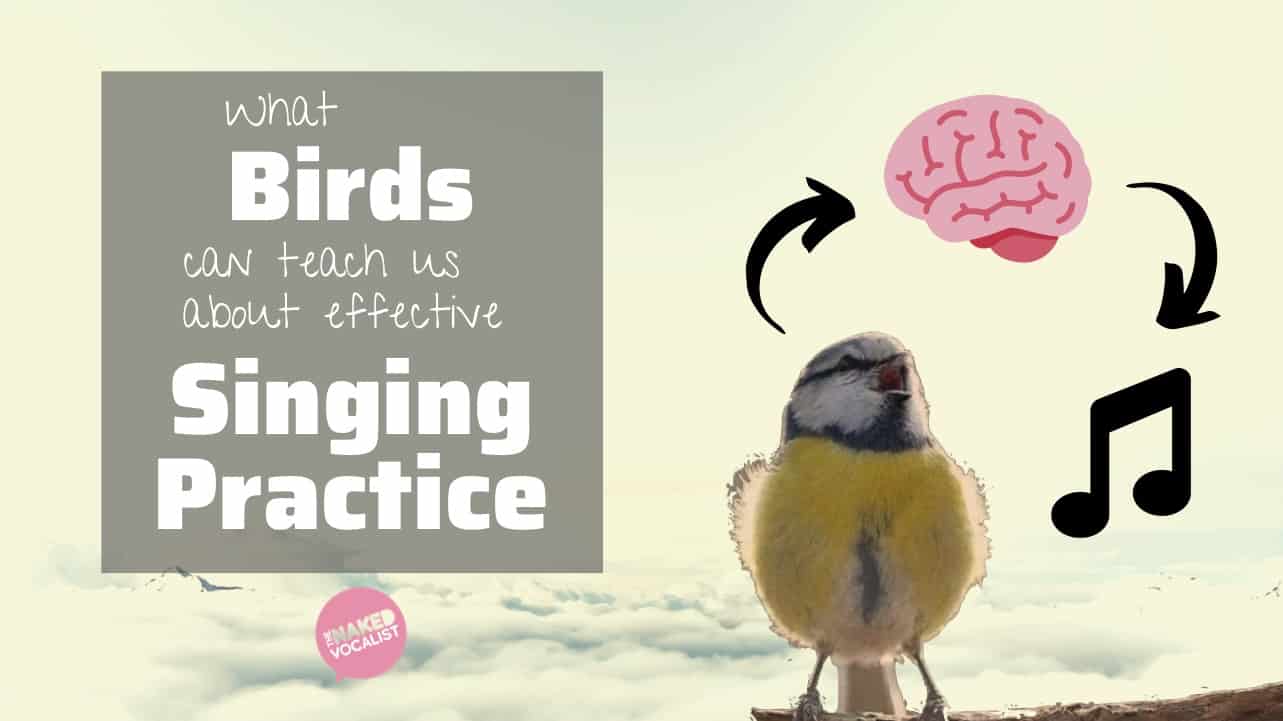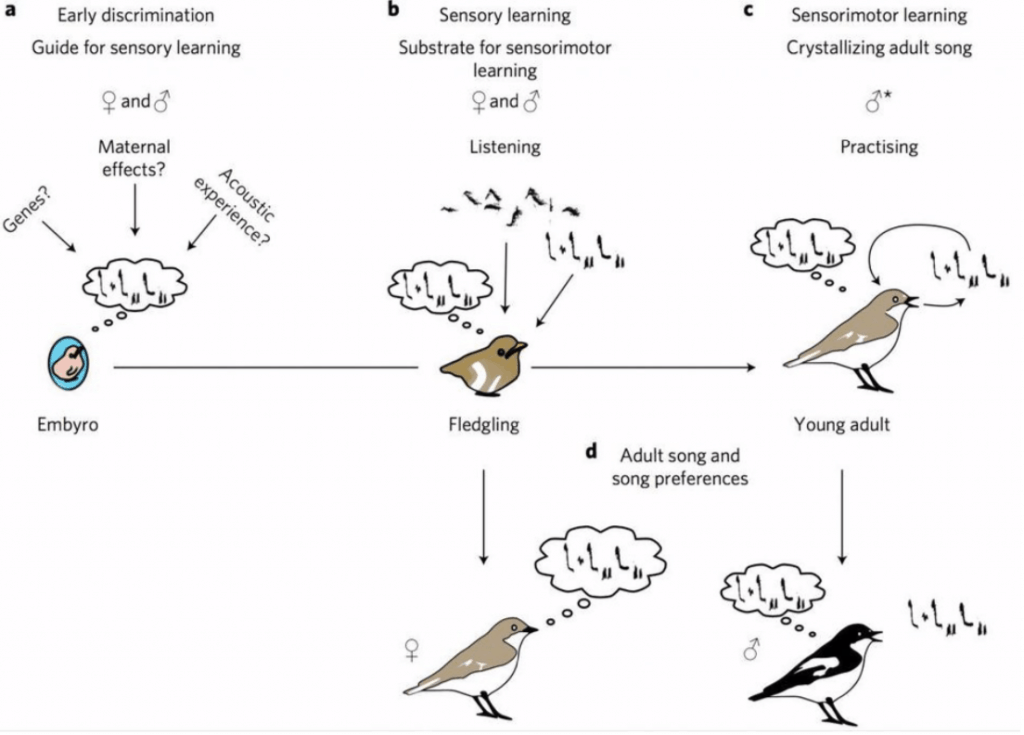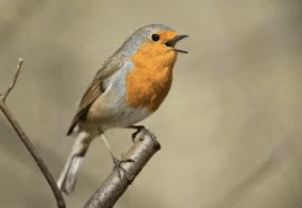
The singing instinct, which men have in common with the birds is, without a doubt, at the root of the vocal art.
David Frankcon-Davis in “The Singing of the Future”
Hi! My name is Heidi Moss Erickson and I have a passion for the brain.
More specifically, my brain has a passion for the brain in singing. In addition to my private studio, I teach Vocal Physiology at the San Francisco Conservatory of Music and I like to give talks and write about outside-the-box vocal pedagogy.
Brain + singing
In this blog I want to introduce you to some ideas from the field of neuroscience: which is the study of all things brain. The more we learn about how and why we sing, the better singers we can be. So it is my hope that you can use some of the ideas in this post to further your own exploration in singing and discover new ways to improve!
I also hope it will inspire curiosity to get to know your own brain better. Although my expertise focuses on classical technique, I teach all genres and I feel these concepts apply to ALL humans.
But first…
Birds
Confession: I never really liked birds. To be honest, I am more of a cat person. Living in NYC during my formative years, I thought the only birds that existed were the annoying pigeons that I affectionately called ‘flying rats’.
When I took neuroscience classes in graduate school (I am admittedly a dabbler), I marveled that the bird was actually a model organism for vocalization.
“Ha!” I thought.
“That’s a stretch!”
But my eyes began to open to the fact that those scientists may be on to something…
Years passed, and I went on very different scientific adventures: immunology, telomeres (the ends of your DNA which do cool things), and then vocal pedagogy (see, I AM a dabbler). But in 2007, when I came down at the height of my singing career with a rare seventh cranial nerve disorder. It’s basically like Bell’s Palsy, but worse and more permanent. After that I had to figure out ways to retrain myself, and so the birds came back.
And not in an Alfred Hitchcock kind of way, but in a neuroscience-of-singing way.
A new way
Prior to my nerve injury, I was admittedly what I now affectionately call a ‘downstream voice enthusiast”: I reveled in the mechanism itself. Indoctrinated by Richard Miller when I was at Oberlin, the inner-workings of the vocal machinery was a wondrous obsession. But here I was, with that very machinery I learned to refine, in complete disarray.
I immersed myself in the literature trying to figure out if my brain could adapt to this new configuration. I revisited vocal physiology and pedagogy texts to see what was adaptable. It was a long and arduous process spanning over two years. But fortunately in the end, I was able to rewire my brain to produce certain sounds using different muscle coordinations. It felt miraculous. And my successes were despite many predictions to the contrary.
Dr. Jarvis
Coincidentally, during my regular research library searches (a perfect way to spend a Sunday afternoon, by the way) I stumbled upon the groundbreaking research of Dr. Erich Jarvis who was a professor at, of all places, my old scientific home, Rockefeller University. (Can someone say, fate?) His work opened pandora’s box on the wonder of songbirds and forever changed my approach to vocal pedagogy. It also clarified why my unusual approach to retraining post-injury was successful: the power of listening, thought, and repetition is fundamental to successful vocalization.
But more importantly, I learned that birds aren’t dumb at all: they are actually quite intelligent and we should be proud to share common strategies with them. See for yourself:
Impressive, right? If Einstein can learn to create all of those different sounds on command, you can certainly can get through that song cycle or jazz set that’s been plaguing you. Maybe you just need to think more like a bird…But first, a little background.
Why do we sing?
Admit it. We are all obsessed with HOW we sing. For those of us who are historical vocal pedagogy buffs (ahem, not mentioning any names…ok…me), we know that we have spent centuries dissecting the physical process of singing, just like I did at Oberlin. Even this very site has countless ‘how to’s’ on their site: breath control? check. Tongue tension? Grunts and screams? Check. Check.
Don’t get me wrong: that is all very important!
However, with my newfound disability conflicting with many pedagogic ‘truths’, I began to re-examine the ‘how’s’. Being unable to sing was immensely traumatic. My tongue, my lips, my jaw, and face all had to be retrained. Heck, I still cannot even do half the exercises on this Naked Vocalist platform: no puffy cheeks, no lip raspberries.
Don’t even talk about straw phonation…
BUT I can SING. And this was against all predictions to the contrary.
Neuroplasticity
So there was SOMETHING in my brain that was so determined to do this art, that it re-wired itself to make sounds in a NEW way. The idea that the brain can adapt and change (called “neuroplasticity”) was something I thought was science fiction. Yet here I was! I felt like a superhero. And thus, my quest began to understand the neural processing of vocalization and how I was able to retrain. This trickled down to wondrous results for my students as well: and I am hoping for you too!
And that’s what leads me to birds…To understand our brain for singing, we must understand THEIRS…
Ok, really now: Why do we sing?
(and when will you get to the bird stuff?)
Lots of animals make sounds: dogs bark. Cats meow. They can even understand us (and subsequently ignore us): ‘sit’, ‘fetch’. BUT those
animals cannot talk back to us and say ‘i don’t feel like sitting’ or ‘go get it yourself!’. Thank goodness. Their sounds are, for the most part, very rudimentary and limited.
However, there is a small class of animals called vocal learners who are unique in their communication. What defines a vocal learner is the ability to imitate new sounds and modify what they hear to produce more complex vocalizations.
What does that description remind you of? Your last voice lesson perhaps?
Vocal learners
There are only 8 animal groups that are vocal learners: Humans, Bats, Cetaceans (whales), Pinnipeds (seals/dolphins), Elephants and vocal learning Bird (i.e. Parrots, Hummingbirds and Songbirds, like the Finch).
It is important to note NOT ALL BIRDS ARE SONGBIRDS! Or vocal learners at all. Certainly not those flying rats I mentioned. So, only a small group are actually the true singers in the avian family.
So here is the big ‘why’: vocal learners have some great evolutionary advantages. For fun, see how many of these descriptors apply to you as a singer:
Unique Identification:
The ability to differentiate individuals within a population, i.e. “look at ME!”.
Enhanced Communication:
Emotional vs semantic, i.e. “help! I’m gonna die!!” vs “this is where the awesome fruit tree is, bro”.
Mate attraction:
Variability and talent is key to securing a well-matched partner. In fact, ’sexy songs’ are THE driving force for selection in birds. Some may say in humans too, i.e. who gets all heated up by “I’m bringing Sexyback, yeah!” or “Habanera”?
Defense:
Variability allows animals to confer location in addition to warnings, i.e. “Hey! That tiger is over THERE! Right next to FRED!”
Environment:
Alteration of vocalizations to stand out based on external sound spheres, i.e. talking in a loud restaurant. Singing above the band. Or a songbird wanting to attract a mate in a sea of other songbird sounds. Diversify, baby!
Thus, our ability to imitate new sounds and modify what we hear to produce more complex vocalizations is critical for our existence. Singing is an extension of that.
BUT we also share one big disadvantage: diverse vocalizations attract predators. So, it is interesting to note that all vocal learners are either predators at the top of the food chain, have evolved with few predators (like the parrots on remote islands), or have good avoidance tactics (i.e. quick flight, like that hummingbird my cat Flicka relentlessly tries to capture to no avail).
FUN FACT: finches raised in captivity have a more diverse song palette than those in the wild! No predators, more songs! Maybe you should think about going into hiding to learn repertoire for your next recital…
Songbirds are a model organism used to study vocal learning because there are functional, structural, and genetic analogues in humans.
Let’s see what we have in common…
Just like humans, songbirds learn their vocal repertoire from their parents. Look, there’s even legit research about it:
Stepwise acquisition of vocal combinatorial capacity in songbirds and human infants
Dina Lipkind, Gary F. Marcus, Douglas K. Bemis, Kazutoshi Sasahara, Nori Jacoby, Miki Takahasi,
Kenta Suzuki, Olga Feher, Primoz Ravbar, Kazuo Okanoya & Ofer Tchernichovski.
In other words, vocal learning birds, like humans, acquire and perfect their songs via three simple steps:
- Listening: starting with smaller patterns and over time creating subtle order changes (one at a time). Repetition is important in the listening step to codify sound palettes.
- Practicing: birds practice patterns in a stepwise fashion with a lot of repetition
- Developing independence: once birds have worked diligently on their tutor’s patterns, they begin to adapt their own unique syntax and style.
How does this compare to your own vocal work? Is it like drilling riffs? runs? coloratura?

Image: Yael Mandelblat-Cerf, Michale S. Fee
Wait… I thought we are closer to primates for our ability to communicate?
Like that chimp that uses sign language right? So why are we talking about birds?
Evolution is tricky. Yes, our family tree stems directly from our primate ancestors. And we do get a lot from our chimp cousins! But, there is another way common threads can appear.
A happy accident?
Convergent evolution is the independent evolution of similar features in species from different periods. Basically meaning:
“A trait popped up in animals on different family trees and we don’t really know what to make of it other than it is cool they have something random in common.”
Such a process creates structures that have similar form or function but were not present in the last common ancestor of those groups.
So yes, our vocal learning ability has more in common with BIRDS than our monkey friends! Non-human primates are NOT vocal learners. Who knew? Well now YOU do!
To see what we have in common with vocal learning birds, let’s start with our brain. Here is a very general schematic of how we go from listening to vocalizing. You can see there are several steps and feedback mechanisms:
Singing in the brain
We won’t get in the weeds here, since neuroscience is complex even for neuroscientists, but we can extract a simplistic brain process for our own vocalization that is helpful to understand. First and foremost, just like in the songbird example, all vocalization starts with listening. That is how our brains get their repertoire of sounds, phonemes, word structure, language, song, etc. we learn throughout our lifetimes. As we refine our vocal ability, we go through several steps in practice, and many steps happen very, very fast:
Listening: to model vocalizations from our parents and environment
Processing: all of the auditory information is carefully catalogued
Thinking: silently about WHAT to vocalize. This is a critical pre-motor processing step.
Infusing: that vocalization with other individual inputs and modifying vocal goal: i.e. emotion, intention, tone, language
Thinking: silently about HOW to vocalize (this includes motor signaling without vocalization!)
Refining: 1-4
Sending: the final motor signal to accomplish the vocal task
The theory of vocal learning
The discovery of these closely analogous pathways was revolutionary as you can imagine. It turns out, the process was quite serendipitous: a simple twist of fate allowed us to become vocal learners like our songbird compatriots. Basically, our brains simply randomly duplicated a motor pathway used to control our limbs. Dr. Erich Jarvis discovered this and proposed this motor theory of vocal learning.
Sing with your hands
In birds, their vocalization pathways lie right next to their hopping pathways. For us, vocalization pathways are next to our limb control pathways. One can imagine, perhaps, that gestures are related to this closeness. Interestingly, researchers have found that singing helps Parkinson’s patients improve their gait: strengthening neighboring neuronal pathways in singing influences the ones controlling their limbs. So next time you sing with your arms passionately gesturing, know that your singing and limb motor signals are friendly neighbors. Some even use this kind of movement in practice to complement vocalization. We often try to quiet our arms, which is fine for performance, but give yourselves time to be free when you practice once in awhile: make big circles, model your runs, go crazy.

Image: courtesy of Dr. Erich Jarvis
Ok. That’s all very interesting. But how can I apply this to my OWN singing?
There are some distinct ways we can put this knowledge about vocal learning into practice. When we look at a model of singing, we can see an area of uncharted territory. We focus on the mechanics and actions, but what about other thought inputs we can use to refine the vocal output? Also, what is the most efficient way for us to learn music? Are there things we can do to make it easier?
Where do I begin???
It can be overwhelming: we can choose SO many things to think about when we sing…
But using the bird model, there are some things we can do to make learning music faster and easier. Since our brains are similar, it makes sense to capitalize on this knowledge. Birds don’t think about their syrinx (=the bird larynx).
But humans do… a lot. Such thoughts have value.
But maybe we could be a bit more ‘bird brained’ sometimes in our approach, especially at the ‘early learning’ phase of a song.
The Bird Way
Here are some simple non-technical suggestions for your singing practice, rooted in the science of vocal learning, to approach a new song. Notice there is nothing about right or wrong, corrections, etc. Those are for other times when you refine with a coach, teacher, or yourself later. This is about the PROCESS. Be like the birds!
- At first: small bites, mentally separating components, i.e. language (speak the text intoned), rhythm (tapping, if complicated), then melody (playing on piano only) etc. Dare to be reductionist! Remember your inner child. Your brain doesn’t like to multi-task so this allows integration of each piece separately. The goal is automation so you never have to ‘think’ about it.
- After the parts feel familiar, don’t even sing yet! Just audiate – i.e. hear it in your head. Hear it how you WANT it to sound. Your voice requires that step. In order to sing Christina Aguilera’s riffs and runs from “Ain’t No Other Man” you have to hear it in your head first. Same goes for classical coloratura patterns. The audiation step is CRITICAL to our vocal process and we can really accomplish a lot just by taking the time to think. Even WHILE singing, thinking a little ahead of how you want to sound in a phrase can make it so much easier.
- Make recordings of YOURSELF singing. Be your own vocal learning tutor! Create smaller sections of a piece. A single vowel. Vowels alone. Then text. Even transpose or invert sections to sense different registrations. It can smooth out transitions. Sing and record them several times. Then listen over and over again! Play with different timbres and textures. There is no right way in exploration. You will find the integration will happen faster than just reading your score every practice session without listening. Get away from the score as soon as you can. Your visual brain wants to do other things- (like imagining you’re the Masked Singer? Or on stage at the MET?)- not stare at a page. And written music is actually not very helpful for singers (more on that to come).
- Positive directives work better than negative directives (“DO this” rather than “DON’T do this”). Be kind to yourself. Ask your teachers and coaches to do the same. Find what WORKS and analyze that. In fact, positive experiences increase dopamine which strengthens synapses (in birds too!) so you will actually learn and retain better if your experience is positive. Not stressful. Nor critical. (“Be silent, inner monster!”)
- Include upstream directives (emotion, character, distraction, craziness). The brain needs balance and the variation will actually help solidify motor processing via different paths. You will also be surprised how these signals can actually solve technical problems! Evening singing with emotions unrelated or opposite to the piece: you can discover new sounds that way. (i.e. try singing Cole Porter’s “Let’s do it” like a vengeful psychopath!) We are wired to vocalize for a purpose. Don’t waste what nature gave you!
- Imagery is extremely helpful: lying down, imagining how you sound, where you are, creating a scene in your mind IS a form of practice! And it is just as important as actually practicing. Birds do it too in their sleep!
- Time off and rest is just as important as time on and practice. Your brain needs to process and sort the work you have done. Take breaks. Go on a hike. Meditate. Get sleep! Cramming is counterproductive.
But what about those really hard riffs? That endless coloratura? Can I learn those easily too?
Bird brains and human brains LOVE patterns! Thus, if you want seamless riffs or coloratura, capitalize on patterns. Small sections. Mix things up!
i.e. “Rejoice Greatly!”
Divide the coloratura into two sets of patterns.
Record your practice of each set of 1-6 as follows:
- Changing rhythms: i.e. dotted, triplets, etc.
- Changing vocal register: i.e. a third higher/lower
- Combine in stages: weaving together over lines
Listen over and over!
Ecco! Coloratura perfetto. Or that run? Nailed it!
For the readers…
As I mentioned earlier, written music isn’t helpful for vocalization. Birds don’t read music (if you know of one, let me know!). Of course, we might need to read music, even sightread for some gigs, but it is important to know which elements are counter to the mechanism. We are aural vocalizers, not visual. We do it by ear and must always keep that in mind! In another life, maybe we can design a voice-friendly notation for music, but for now, we are stuck with what we have.
Emotional ‘mix and match’
Another important element to our vocalization is our ability to express many different emotions. Birds sing to communicate. We do too! But sometimes our songs need a different sound than what is literally in the text. If you are singing a sad song with the low energy of sadness, that vocal line will be, well…sad. And not in the way that you want it. You know what I mean…
So, play with as many ideas as you can! Same goes for characters. Go crazy! Experiment! There is no right or wrong in vocal learning. That’s the beauty of the process. We discover by doing. And play is very good for our brains. (:

Ideas for vocal experimentation!
You will SAVE time!
Singing like a bird may seem tedious at first: we hesitate to take things apart, and so many singers want to sing a WHOLE song from start to finish without ever practicing the components. We are impatient beasts and want the music to happen as quickly as possible. What is interesting is that this process actually makes it FASTER. (Really, I’ve tested it ).
Not to mention, it can save having to UN-learn later, which as we know, is a VERY tedious process.
We are so fortunate to have this wondrous art
Understanding elements beyond ‘what do my vocal folds do?’ or ‘how is my breath working?’ are equally important in our training. The freedom to play is also important for our soul. Sometimes the over-emphasis on technique can be counter productive, resulting in a stuck, think-y process…
When that happens, simply imagine you are as free as a songbird…










